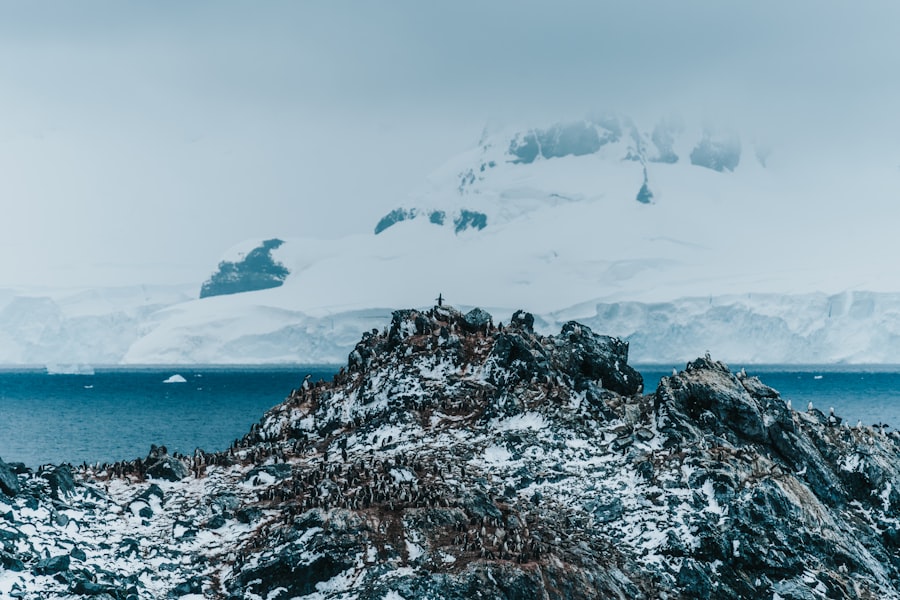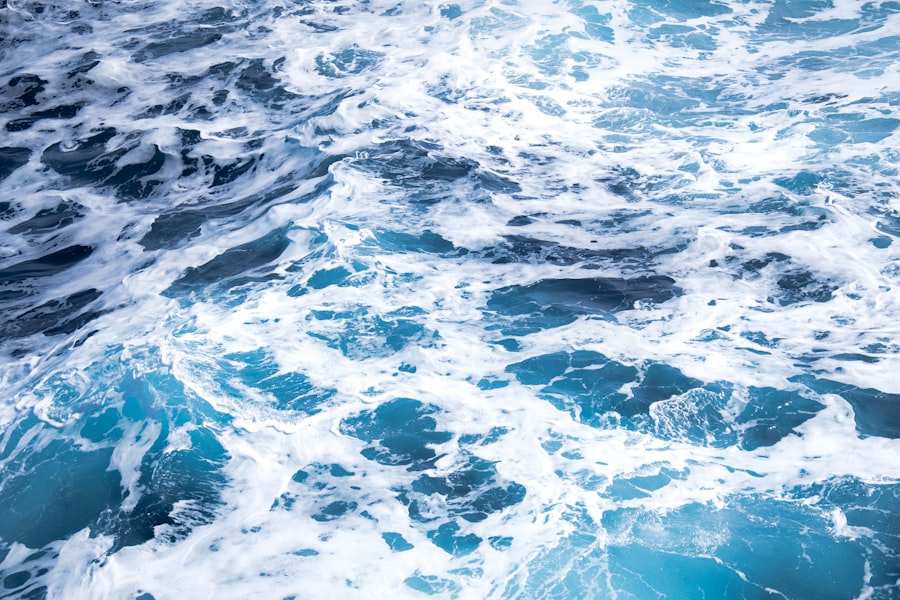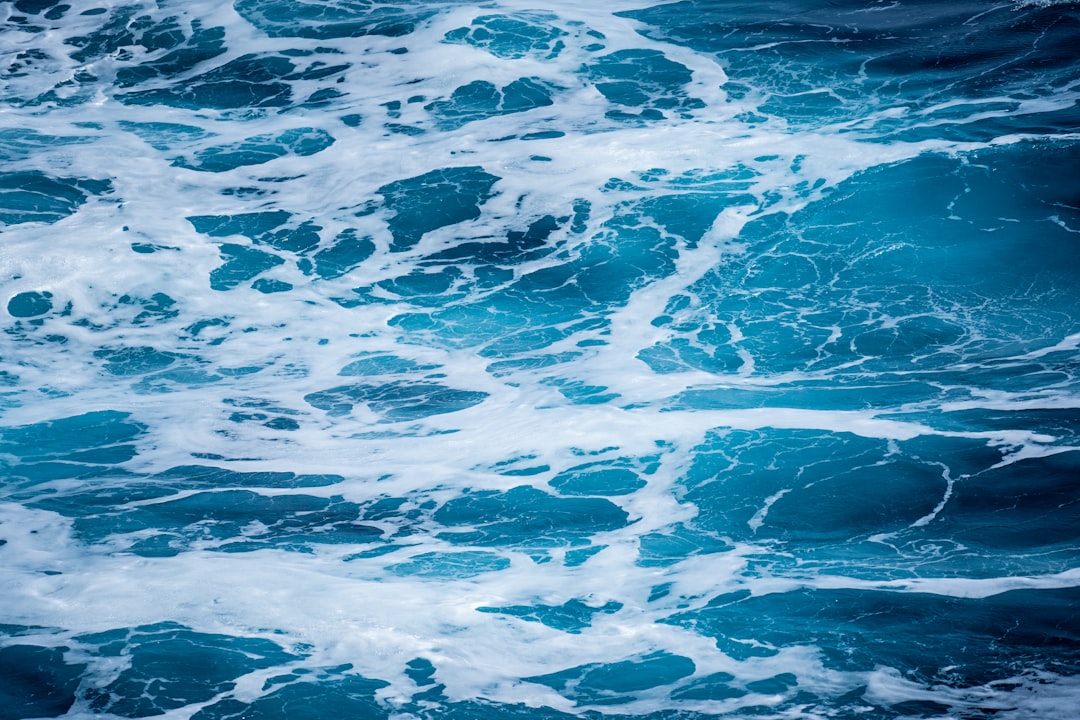The Drake Passage, a body of water that separates South America from Antarctica, is often regarded as one of the most treacherous maritime routes in the world. Named after the English explorer Sir Francis Drake, who navigated these waters in the late 16th century, the passage has garnered a reputation for its unpredictable weather and tumultuous seas. This narrow stretch of ocean, measuring approximately 800 kilometers (500 miles) wide, serves as a critical conduit for vessels traveling between the Atlantic and Pacific Oceans.
Its significance extends beyond mere geography; it is a vital area for marine biodiversity and plays a crucial role in global oceanic currents. For many adventurers and travelers, crossing the Drake Passage represents a rite of passage, a test of endurance and resilience against nature’s formidable forces. However, this journey is often shrouded in myths and misconceptions that can deter even the most seasoned sailors.
This article aims to explore the geography, history, and experiences associated with the Drake Passage while debunking common myths and providing insights into safety measures for those who dare to traverse its waters.
Key Takeaways
- Drake Passage is a treacherous body of water located between the southern tip of South America and the northern tip of Antarctica.
- The geography and climate of Drake Passage are characterized by strong winds, rough seas, and unpredictable weather conditions.
- Despite its reputation for being dangerous, Drake Passage has a rich history and has been crossed by explorers and travelers for centuries.
- Common misconceptions about Drake Passage include exaggerated tales of peril and difficulty in crossing, which may not reflect the reality of the experience.
- While Drake Passage poses certain risks, safety measures and precautions can be taken to ensure a safe crossing for travelers.
The Geography and Climate of Drake Passage
The geography of the Drake Passage is characterized by its unique position at the confluence of two major ocean currents: the Antarctic Circumpolar Current and the Humboldt Current. This convergence creates a dynamic marine environment that is rich in nutrients, supporting a diverse array of marine life, including whales, seals, and various species of seabirds. The passage itself is flanked by the rugged coastlines of Cape Horn to the north and the Antarctic Peninsula to the south, creating a dramatic backdrop for those who navigate its waters.
The climate in the Drake Passage is notoriously volatile, influenced by its proximity to Antarctica and the Southern Ocean. Weather patterns can shift rapidly, with calm seas transforming into turbulent waves within minutes. The region experiences strong winds, particularly during the winter months, which can lead to rough sailing conditions.
Despite these challenges, the passage also offers breathtaking views of icebergs and glacial landscapes, making it a sought-after destination for photographers and nature enthusiasts alike. Understanding this geographical and climatic context is crucial for anyone planning to cross the Drake Passage, as it sets the stage for both the beauty and unpredictability that define this remarkable waterway.
The History of Drake Passage and its Reputation

The history of the Drake Passage is steeped in exploration and adventure. Sir Francis Drake was one of the first Europeans to navigate these waters during his circumnavigation of the globe in 1578. His journey not only opened up new trade routes but also laid the groundwork for future explorations of Antarctica.
Over the centuries, numerous explorers have braved the passage, each contributing to its growing reputation as a formidable maritime challenge. The tales of shipwrecks and perilous encounters with nature have only added to its mystique. As time progressed, the Drake Passage became synonymous with danger and unpredictability.
Sailors shared stories of monstrous waves and fierce storms that could arise without warning. This reputation was further solidified by accounts from early 20th-century explorers who faced extreme conditions while attempting to reach Antarctica. The passage’s notoriety has made it a focal point for maritime lore, often depicted in literature and film as a place where only the bravest dare to tread.
This historical context not only highlights the challenges faced by early navigators but also underscores how these narratives have shaped contemporary perceptions of the Drake Passage.
Common Misconceptions about Drake Passage
| Misconception | Reality |
|---|---|
| Drake Passage is always stormy | While it can be rough, not every crossing is stormy |
| It’s impossible to sail through Drake Passage | Many ships successfully navigate the passage each year |
| Drake Passage is always icy and cold | During the summer, temperatures can be milder |
| It’s too dangerous to visit Drake Passage | With proper planning and experienced crews, it can be a safe journey |
Despite its fearsome reputation, many misconceptions surround the Drake Passage that can mislead potential travelers. One prevalent myth is that crossing the passage is inherently dangerous and should be avoided at all costs. While it is true that conditions can be rough, modern vessels are equipped with advanced technology and safety features that significantly mitigate risks.
Many travelers successfully navigate these waters each year without incident, demonstrating that while caution is necessary, fear should not deter exploration. Another common misconception is that only experienced sailors can safely cross the Drake Passage. In reality, numerous tour operators offer guided expeditions designed for individuals with varying levels of sailing experience.
These trips often include comprehensive safety briefings and support from experienced crew members who are well-versed in navigating challenging conditions. By dispelling these myths, potential travelers can approach their journey with a more balanced understanding of what to expect when crossing this iconic waterway.
The Reality of Drake Passage: Safety and Risks
The reality of crossing the Drake Passage involves a complex interplay between safety measures and inherent risks. While it is true that weather conditions can be unpredictable, advancements in meteorological technology have improved sailors’ ability to anticipate changes in weather patterns. Modern vessels are designed to withstand rough seas, equipped with stabilizers and other features that enhance passenger comfort during turbulent crossings.
Additionally, many tour operators prioritize safety by conducting thorough pre-departure briefings and ensuring that their crews are trained to handle emergencies. However, it is essential for travelers to remain aware of potential risks associated with crossing the Drake Passage. Seasickness can be a common issue due to the passage’s notorious swells, which can affect even seasoned sailors.
Travelers are encouraged to take preventative measures, such as using motion sickness medication or choosing cabins located lower in the ship for added stability. By acknowledging these realities and preparing accordingly, individuals can enhance their overall experience while navigating this remarkable stretch of ocean.
Factors that Contribute to the Perceived Danger of Drake Passage

Several factors contribute to the perceived danger associated with crossing the Drake Passage. One significant element is its geographical location at the southern tip of South America, where two major ocean currents collide. This convergence creates unpredictable weather patterns that can lead to sudden storms and rough seas.
Additionally, the passage’s relatively narrow width means that vessels have limited options for seeking shelter during inclement weather. Another factor influencing perceptions of danger is the historical narrative surrounding the Drake Passage. Tales of shipwrecks and perilous journeys have been passed down through generations, creating an aura of fear that persists today.
These stories often overshadow accounts of successful crossings and safe voyages, leading many to view the passage as an insurmountable challenge rather than an adventure waiting to be embraced. By understanding these contributing factors, travelers can better contextualize their fears and approach their journey with a more informed perspective.
The Experience of Crossing Drake Passage
For those who choose to embark on a journey across the Drake Passage, the experience can be both exhilarating and transformative. As vessels set sail from Ushuaia, Argentina, passengers are often filled with anticipation and excitement about what lies ahead. The initial days at sea may involve navigating through calm waters before entering the more turbulent sections of the passage.
Travelers frequently report a sense of camaraderie as they share stories and experiences with fellow passengers while braving nature’s elements together. The sights encountered during this crossing are nothing short of breathtaking. Icebergs floating majestically in the distance, seabirds soaring overhead, and glimpses of marine life create an unforgettable backdrop for this adventure.
Many travelers find themselves captivated by the raw beauty surrounding them, which serves as a reminder of nature’s power and majesty. While challenges may arise during the journey—such as rough seas or bouts of seasickness—the overall experience often leaves participants with a profound sense of accomplishment and connection to one of Earth’s most remote regions.
Safety Measures and Precautions for Crossing Drake Passage
To ensure a safe crossing of the Drake Passage, several safety measures and precautions are typically implemented by tour operators and vessel crews. Before departure, passengers receive comprehensive briefings on safety protocols, including emergency procedures and guidelines for handling rough seas. Vessels are equipped with life jackets, lifeboats, and other essential safety equipment to address potential emergencies.
Travelers are also encouraged to take personal precautions to enhance their comfort during the journey. This may include packing appropriate clothing for varying weather conditions, bringing seasickness medication, and staying hydrated throughout the crossing. Additionally, maintaining open communication with crew members about any concerns or discomfort can help ensure a safer experience on board.
By adhering to these safety measures and being proactive about personal well-being, travelers can navigate the challenges of crossing the Drake Passage with greater confidence.
Testimonials from Travelers and Experts
Testimonials from travelers who have crossed the Drake Passage often reveal a range of emotions—from trepidation before departure to exhilaration upon completion of the journey. Many recount their initial fears about potential dangers but express gratitude for having taken on this adventure despite those concerns. Travelers frequently highlight moments of awe as they witnessed stunning landscapes and encountered wildlife unique to this region.
Experts in maritime navigation also emphasize that while caution is warranted when crossing the Drake Passage, modern advancements in technology have significantly improved safety standards for vessels operating in these waters. They note that experienced crews are adept at reading weather patterns and making informed decisions about when to navigate through rough sections or seek shelter if necessary. These insights help demystify some of the fears surrounding this passage while reinforcing that safe crossings are indeed possible.
How Social Media and Internet Forums Shape Perceptions of Drake Passage
In today’s digital age, social media platforms and internet forums play a significant role in shaping perceptions about various travel destinations—including the Drake Passage. Travelers often share their experiences online through blogs, videos, and social media posts, contributing to a collective narrative about what it means to cross this iconic waterway. While many posts highlight breathtaking views and thrilling adventures, others may focus on challenges faced during crossings or recount harrowing tales from past voyages.
This duality can create mixed perceptions among potential travelers; some may feel inspired by positive accounts while others become apprehensive due to negative experiences shared online. Additionally, sensationalized stories or images depicting extreme weather conditions can amplify fears surrounding crossing the passage. It is essential for prospective travelers to approach these narratives critically—seeking out balanced perspectives that acknowledge both challenges and triumphs associated with navigating this remarkable stretch of ocean.
Debunking Myths and Understanding the Reality of Drake Passage
In conclusion, understanding the realities of crossing the Drake Passage requires a nuanced perspective that balances historical narratives with contemporary experiences. While it is true that this body of water presents unique challenges due to its geographical location and unpredictable weather patterns, modern advancements in maritime technology have significantly improved safety standards for those who choose to embark on this journey. By debunking common myths surrounding perceived dangers associated with crossing the Drake Passage—such as notions that only experienced sailors can navigate its waters—potential travelers can approach their adventure with greater confidence and preparedness.
Ultimately, crossing this iconic passage offers an opportunity not only for personal growth but also for connection with nature’s raw beauty—a journey worth undertaking for those willing to embrace both its challenges and rewards.
Navigating the Drake Passage is often considered one of the most treacherous maritime routes in the world, with its unpredictable weather and turbulent seas posing significant challenges to even the most experienced sailors.
For more insights and detailed information, you can read the article by visiting this link. This resource provides a comprehensive overview of the Drake Passage, offering valuable perspectives for those interested in maritime adventures and the natural challenges they present.
WATCH NOW! Drake Passage: Earth’s Deadliest Waters Revealed
FAQs
What is the Drake Passage?
The Drake Passage is the body of water between the southern tip of South America and the northern tip of the Antarctic Peninsula. It is known for its rough seas and challenging sailing conditions.
Why is the Drake Passage considered dangerous?
The Drake Passage is considered dangerous due to its notorious reputation for strong winds, large waves, and unpredictable weather. The convergence of the Atlantic, Pacific, and Southern oceans also contributes to its challenging conditions.
What are the risks of traveling through the Drake Passage?
Traveling through the Drake Passage poses risks such as rough seas, extreme weather conditions, and the potential for sea sickness. The passage is also known for its icebergs and ice floes, which can be hazardous to ships.
Are there any safety measures in place for crossing the Drake Passage?
Ships crossing the Drake Passage are equipped with experienced crew members, advanced navigation technology, and safety protocols to mitigate the risks associated with the passage. Additionally, many cruise ships and vessels that traverse the Drake Passage are built to withstand rough seas.
What are some tips for safely navigating the Drake Passage?
Some tips for safely navigating the Drake Passage include choosing a reputable and experienced cruise or expedition company, being prepared for rough seas and potential sea sickness, and following the guidance of the ship’s crew. It is also important to pack appropriate clothing and gear for the cold and windy conditions.
